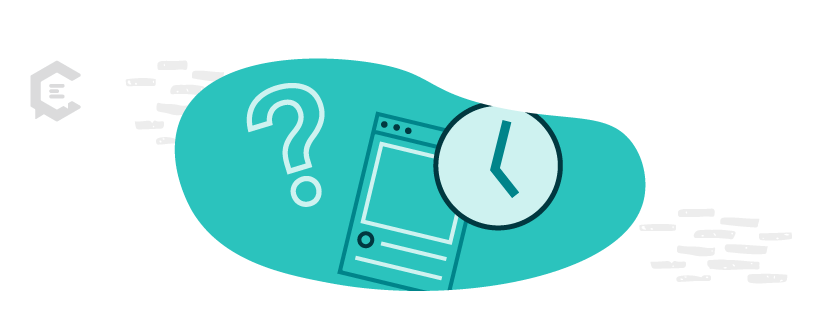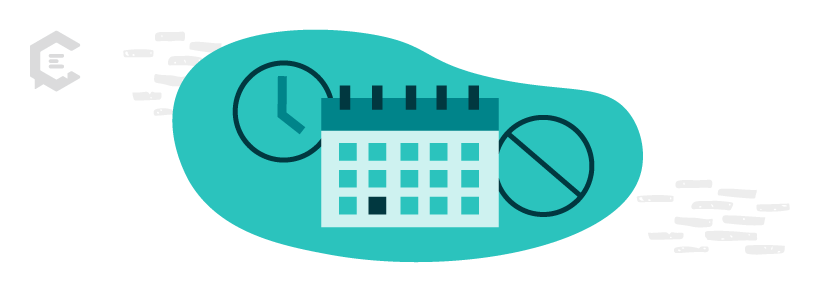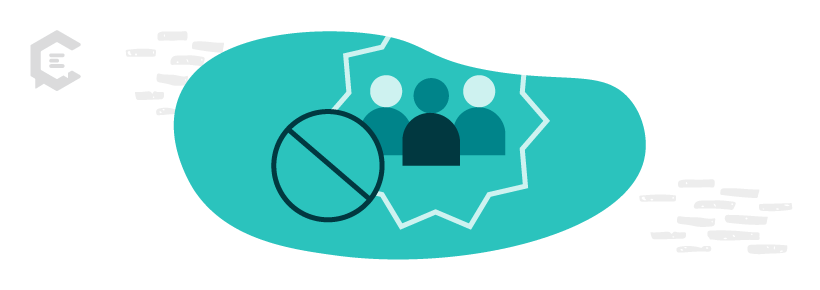Still looking for your optimal social media posting time? There are so many variables that go into developing a social media or blog posting strategy. Successfully identifying strategy goals, segmenting your audience, and creating informative and engaging content are all essential skills.
However, once you have everything ready to go, many people are stopped in their tracks as they wonder: “What’s the best time to publish a blog post?”
Even if you work in social media, this question will likely follow you there. What’s the best time to post on Facebook? Are there any best times to post on Instagram? How can you find out?
In hopes of answering these questions, many social media and content marketers simply experiment until they find a strategy that works for them. While this may eventually work out in your favor, many resources can help you reach a more accurate conclusion faster.
Here are tips to help you find the best social media posting time for your brand and eight major mistakes to avoid.
Does social media posting time matter?
If you’ve taken the time to write a great post on Instagram, Facebook, or your own blog, you should know when you’ll be most likely to reach your audience. So, what is the best social media posting time for you?
The answer depends on several different factors, including:
- Your goals
- Your audience
- The platform you’re using
- Your business (the best posting times for B2B and B2C companies vary widely)
- Your industry
8 social media posting time mistakes to avoid
As you start to research and plan out the ideal social media posting times for your content, you’ll likely make mistakes. Don’t worry! Making mistakes is part of the growing process and will help you learn. However, some mistakes can be avoided if you know about them in advance.
Here are some of the most common mistakes to avoid when finding the best day and time to publish a blog post or social media post.
1. Not planning ahead
The biggest mistake you could make when timing your social media or blog posts is not planning ahead.
The moment that you finish editing and formatting is likely not the best time to post. Instead, develop a content calendar for the month ahead, and research and plan the best posting times once the content has been completed.
2. Not doing your own research
Another easy mistake to make when looking for the best social media posting time for Instagram, TikTok, or other social media platforms is not doing your own research.
Many resources can tell you about the best times to post on social media, but they are not tailored to your goals.
If you run an accounting firm that caters to B2B clients, your Facebook posting schedule should be drastically different from a B2C clothing brand.
Plus, most resources don’t offer granular insights, so you must supplement them with your research.
3. Not knowing your goals
What’s your reason for posting content? Before you settle on a posting schedule, think carefully about the goals for your content. Do you want to optimize for social shares, comments, and responses, or increase your website traffic?
Some people have found that morning posts tend to have higher click-through rates while posting on social media on Sundays gets the most shares. Determining your goals will help you develop the best blog post timing.
4. Not knowing your audience
It’s tough to know when to post if you don’t have a clear audience in mind. This is the perfect time to start if you don’t already have buyer personas identified for your audience.
Once you have a clear picture of who you want to read your content, you can do your research to determine when they are most active online.
5. Not using data
What’s the best way to do your own research? Pull the data from your blog or social media platform, and analyze its performance. When do your posts or blogs consistently receive the most traffic? What time is your audience online the most?
If you’re targeting new moms, then early afternoons are your best bet – when the kids are at school.
However, if you’re posting for a B2B audience on LinkedIn, you’ll likely find views and engagements are highest during lunch hour, and later in the afternoon. Look at your data and see what it’s trying to tell you.
6. Not customizing post times for each platform
Do you regularly publish blogs, then immediately post a link across all your social media channels? If you do, stop now! Each platform has its own optimal social media posting time, which also depends on your audience.
7. Not considering peak and non-peak hours
While it’s a great idea to post during peak hours (the time that most people are using a specific platform), that’s also when competition for views and clicks is the highest.
If you were to choose to post during non-peak hours, you’d face less competition and could get more exposure as a result.
Experimenting with posting similar types of content during peak and non-peak hours can help you decide which option is best for your goals.
8. Not A/B testing
Everything in marketing requires testing and optimization, and you’ll likely need to develop and test several theories before you hit on the perfect time.
Don’t be afraid of A/B testing your content – this can help you eliminate different variables and hone in on the best social media posting time for your audience.
By doing your research, looking at data, and testing your theories, you can develop the optimal posting time for your content across various blog and social media platforms.
If you’re looking for professional content marketers, strategists, and social media experts that can help you create exceptional content, get in touch with us today.







